Triathlon self-locking shoelaces

- 1. Understanding the Basics of Triathlon Self-Locking Shoelaces
- - An Insight into what Triathlon Self-Locking Shoelaces are
- - Distinguishing Features of Triathlon Self-Locking Shoelaces
- - Practical Importance in a Triathlon Race
- 2. Trusted Mechanisms Behind Self-Locking Shoelaces
- 3. The Role of Self-Locking Shoelaces in Performance Efficiency
- - Reducing Transition Times: The Magic of Self-Locking Shoelaces
- - Durability and Dependability: Are Self-Locking Shoelaces Reliable?
- 4. Making the Right Choice: Factors to Consider When Buying Self-Locking Shoelaces
- - Necessary Attributes of High-Quality Self-Locking Shoelaces
- - Recognizing Right Fit: Choosing the Correct Shoelace Length
- - Comparing the Methods of Shoelace Locking
- 5. Expert Tips on Using and Caring for Your Self-Locking Shoelaces
1. Understanding the Basics of Triathlon Self-Locking Shoelaces
Unraveling the enigma of Triathlon Self-Locking Shoelaces, are you? Possibly you’ve caught sight of these nifty gadgets on other athletes’ shoes, or you're just musing on ways to shave off precious seconds from your transition time. Whatever the case, sit tight as we delve into the world of these unique shoelaces. In essence, Triathlon Self-Locking Shoelaces are a significant upgrade from your regular laces, boasting advanced snapping mechanisms that tighten around your feet with a simple tug. They redefine speed, convenience, and reliability, especially in high-paced triathlon races where every tick of the clock counts. What makes them stand out, you ask? Let's tread deeper into their exceptional features.
- An Insight into what Triathlon Self-Locking Shoelaces are
Unveil the wonder of Triathlon Self-Locking Shoelaces! Imagine a mechanism that's designed to provide utmost ease while complementing your competitive spirit in triathlon races. Often overlooked, these innovative companions make a significant difference in enhancing your performance – they are reliable, quick, and remarkably user-friendly. Triathlon athletes know the criticalness of smooth transition periods in achieving optimal performance times. Any moment mismanaged could spell the difference between victory and despair. Enter Self-Locking Shoelaces. These ingenious tools, built for speed and comfort, are a game-changer in the world of triathlon. But what exactly are these shoelaces? Essentially, they are no-tie laces that firmly secure your shoes using a unique locking system. They replace traditional shoelaces and eliminate the tripping hazard and time-consuming process of tying or untying knots. Whether you're switching from swimming to cycling or from cycling to running, with Triathlon Self-Locking Shoelaces, you're just a snap away from being race-ready. Most importantly, these shoelaces are not only about functionality, but also about custom fit and fashion. They are available in an array of colors, making your triathlon footwear even more stylish. Truly, Triathlon Self-Locking Shoelaces are not just accessories. They're an essential part of every triathlon athlete’s gear that empowers them to unlock their full potential.
- Distinguishing Features of Triathlon Self-Locking Shoelaces
Triathlon Self-Locking Shoelaces are more than just an accessory; they are crucial gear that gives an edge to athletes. One of the distinguishing features of these special shoelaces is their locking system. Unlike traditional models, they don't need to be manually tied or untied. That's a lifesaver right there! Imagine saving essential seconds that could mean the difference between winning and losing. Besides, they're designed for quick, secure fastening that doesn’t loosen with strenuous activity. Prized for their versatility, they can be easily adjusted to reach your ideal tension, ensuring a comfortable and perfect fit every time you lace up. Another remarkable feature is their ultra-durable material. These aren't your run-of-the-mill shoelaces that fray or break easily. Instead, triathlon self-locking shoelaces are built to withstand extreme conditions, ensuring peak performance throughout your race. They might seem like a small component in the big picture, but their influence on an athlete's performance is undeniable. After all, who would've thought that a simple shoelace could revolutionize the world of triathlon racing? Such is the power of innovation, and triathlon self-locking shoelaces are a perfect example of that. So, if you’re seeking to cut down on transition times without compromising comfort, these shoelaces might just be the upgrade your triathlon gear needs.
- Practical Importance in a Triathlon Race
The practical importance of triathlon self-locking shoelaces in a race, often overlooked, can't be overstated. As a triathlete, you surely know the pressure of transition periods. Slipping in and out of gear, attempting to save every precious second, can drastically tip the scales of your overall race time. Here is where these shoelaces create a significant difference. With an uncomplicated 'slip on and go' mechanism, they eliminate the time-consuming task of tying and untying traditional shoe laces. During these pressured times, traditional shoelaces can be intricate and challenging, sometimes even leading to inconvenient knots. On the other hand, self-locking shoelaces provide an efficient and reliable solution allowing you to smoothly transition from cycling to the running leg of the race. Another notable benefit they offer, which you'd agree, is consistent shoe fit. Once adjusted, these laces maintain a consistent level of tension across your feet, preventing discomfort or even potential injuries originating from poorly tied laces. So, looking through the lens of a triathlon race, these shoelaces are not only a smart choice but, quite possibly, an essential addition to your racing kit.
2. Trusted Mechanisms Behind Self-Locking Shoelaces
Diving into the heart of self-locking shoelaces, you'll be fascinated by the efficient simplicity behind their mechanics. Integral to their design is an advanced locking system, purposefully crafted to secure shoelaces with a firm, non-slip grip. As a triathlon athlete, seconds matter from transitioning between swimming, cycling and running. Picture this - no time squandered on tying shoelaces, no worry about loose laces slowing down your stride - thanks to the steadfast hold of this locking mechanism. Despite their simplicity, the transformative benefits of these shoelaces in racing are profound. They're not just shoe accessories, they're game-changers - shaping the way for streamlined performance.
- Breaking Down the Locking Mechanism
For those who revel in the adrenaline rush of triathlon races, every millisecond carries weight, and transitioning between stages is crucial. Here's where the magic of Triathlon Self-Locking Shoelaces steps in. At their core, these specialized shoe fasteners rely on an ingenious mechanism that you may be curious about. But what exactly brings these impressive speed-enhancing tools to life? At the heart of this technology lies an innovative locking device, dexterously designed to eliminate conventional lacing techniques. No need for time-consuming knots or the risk of untied laces in a triathlon race! Instead, by simply integrating a spring-activated locking mechanism, these shoelaces can be fastened by pulling your laces tight and then securing the lock. Quite a game-changer, don’t you think? The locking mechanism couples with a plastic piece that allows easy adjustment of tension. Ensuring your shoes stay perfectly snug, these mechanisms prevent your laces from loosening, thus providing the optimum footwear fit for any triathlon event. Because wouldn’t you agree that uncomfortable footwear can easily turn a promising race into a nightmare? Essentially, self-locking shoelaces offer the unmatched functionality that can edge you forward in your quest for gold. So, are you ready to experience the unparalleled ease that comes with self-locking mechanisms in your next triathlon?
- Benefits of the Self-Locking System in Racing
The self-locking system in triathlon shoelaces provides a multitude of benefits making it a game-changing choice for racing enthusiasts and professional athletes. Imagine yourself in a triathlon race - every second counts. The efficiency presented by these shoelaces can significantly cut down your 'transition time', the critical moments between changing disciplines. More than eliminating the necessity to tie your shoes mid-race (and possibly stumbling upon loose laces), self-locking shoelaces ensure an optimized fit. The mechanism behind these innovative game-changers maintains a consistent, secure grip on your shoes, adjusting with your feet's movement during the dynamic race environment. This feature can enhance your performance by providing better shoe stability, decreasing the chance of blisters and discomfort, thereby enabling you to focus solely on your speed and stride. One other aspect where the self-locking system succeeds is providing an equal distribution of tension across the shoe, unlike traditional laces, eliminating "pressure points". This results in better overall foot comfort, supporting optimal racing performance. Ultimately, the self-locking system in shoelaces is much more than a convenient alternative to conventional laces; it's an ingenious contribution to sports equipment that supports and enhances athletic performance, allowing triathletes to surpass their limits and reach for the goal seamlessly.
3. The Role of Self-Locking Shoelaces in Performance Efficiency
As an athlete, every second counts in a triathlon race. Self-locking shoelaces play a pivotal role in enhancing your performance efficiency. Think about it. The seconds you spend tying and untying your shoelaces add up, especially in a high-stakes, frenetic race environment. With self-locking shoelaces, you can smoothly transition from swimming to biking to running without the fuss of traditional shoelaces getting in the way. But it’s not just about saving time. Self-locking shoelaces offer consistency in tightness, providing a secure, comfortable fit throughout the race. After all, a triathlon race is demanding enough. Why let your shoelaces slow you down when you can focus on pushing your boundaries?
- Reducing Transition Times: The Magic of Self-Locking Shoelaces
The magic of **Triathlon Self-Locking Shoelaces** lies in their unmatched ability to reduce transition times during a race, significantly impacting your overall performance. How, you may ask? Well, imagine the scenario in the middle of a hectic triathlon - scrambling to switch from biking to running gears, sweaty palms struggling to tie regular shoelaces while the clock keeps ticking. This is where self-locking shoelaces become a game-changer. The innovative design of self-locking mechanisms eliminates the need for traditional knotting and securing your shoelaces. Simply pull and lock - it's as quick and easy as that! No more wasting precious seconds or even minutes dealing with regular shoelaces. This shift from regular shoelaces to self-locking shoelaces can potentially shave off a considerable amount of time from your total triathlon duration. Moreover, the self-locking system ensures that your shoelaces stay in place throughout the race, giving you the confidence to run without fear of tripping or discomfort. So, with triathlon self-locking shoelaces, you're not just buying a product; you're investing in boosting your performance and competitiveness in the race. Remember, every second count in a triathlon, and these innovative laces could just be the essential detail that distances you from your competitors. Even if only by milliseconds, a win is still a win!
- Durability and Dependability: Are Self-Locking Shoelaces Reliable?
When it comes to racing under pressure, every triathlete knows the crucial role of dependability and durability, especially in gears like the self-locking shoelaces. The question that often lingers in the mind - are these shoelaces really reliable? The answer, emphatically, is yes. Self-locking shoelaces are designed with durable synthetic materials that can withstand extreme conditions and intense action, providing you with that much-needed security in a triathlon. They are woven tightly, ensuring they don't snap or fray in the middle of a high-stakes race. But are they dependable? Absolutely! These shoelaces offer a consistent performance allowing you to transition smoothly between phases without worrying about untied laces. They hold a firm grip, withstand sweat, rain and even mud, ensuring your shoes stay snug and in place. So yes, when it comes to durability and dependability, the triathlon self-locking shoelaces stand head and shoulders above conventional shoelaces. But remember, like any product, not all self-locking shoelaces are created equal. Hence, it's important to choose carefully, preferably by going for recognized, well-reviewed brands in the market.
4. Making the Right Choice: Factors to Consider When Buying Self-Locking Shoelaces
Choosing the right self-locking shoelaces for your triathlon can make, or break, your racing experience. Imagine stepping into the game equipped with laces that are not only athlete-friendly but also promise effortless installation and a secure fit. When shopping for your triathlon self-locking shoelaces, prioritise the quality. Look for sturdy, wear-resistant material that is up to the tedious nature of triathlons. The length of the laces should not be overlooked either. Too long can result in unwieldy loops, too short might not fit your shoe eyelets sufficiently. But how do you know which shoelace locking technology to trust? While some prefer an advanced locking system with custom tension adjustments, others might vouch for simple-yet-effective elastic no tie shoelaces. Take your pick, but remember, the ultimate goal is a seamless triathlon experience.
- Necessary Attributes of High-Quality Self-Locking Shoelaces
Nailing your triathlon performance isn't just about stamina and strength, it's also about having the **right gear**. A **critical yet overlooked** component of this gear is the **Triathlon Self-Locking Shoelaces**. Wondering what makes high-quality self-locking shoelaces? Well, there are several **necessary attributes** you need to consider. First, they should have an **efficient locking mechanism**. This means, once fastened, they stay locked, providing a **snug and comfortable fit** without causing any discomfort or necessitating readjustment. Also, string for being **durable enough to withstand** the rigor of a triathlon race. You wouldn't want to risk a breakage mid-race! Second, the **material** also matters. Opt for shoelaces made from **elastic cords or strong synthetic materials**. These types of laces offer **remarkable flexibility** and **stretchability**, enabling an easy fit, regardless of shoe size. A third crucial attribute is the **ease and speed of installation**. The best self-locking shoelaces can be installed within minutes, ideal for athletes looking to save precious time in transition zones. Last but not least, consider the **aesthetic value**. Because who said triathletes can't be stylish? Choose self-locking shoelaces with **vibrant colors** or **unique designs**, allowing you to stand out while also ensuring functional value. Trust me, it's **more than just a shoe tie**; it can be the difference between acing and faltering in a race.
- Recognizing Right Fit: Choosing the Correct Shoelace Length
Recognizing the right fit: choosing the correct shoelace length is not a task to be taken lightly when it comes to your triathlon self-locking shoelaces. While some might believe 'one size fits all' applies here, experienced runners know better. It ultimately boils down to the individual's shoe size and lacing preference. A shorter length might be ideal for someone desiring a tight and secure fit, while a longer length would serve those preferring a looser and comfortable touch. Here's the catch: too short a length, and you risk a lack of flexibility in your foot movement; too long, and you risk the shoelaces becoming a tripping hazard. So, how does one find the perfect balance? Always refer to the manufacturer's sizing guide and compare it with your shoe size. In case you decide to experiment, remember that most self-locking shoelaces can be adjusted for length by cutting, giving you control over the fit. Lastly, consider the number of eyelets your shoes have — a higher number often requires a longer lace. Choosing the correct shoelace length mightn't be as glamorous as other aspects of your triathlon preparation, but remember: victory lies in the details.
- Comparing the Methods of Shoelace Locking
When it comes to the very essence of shoelace locking, different methods come into play that warrants our attention. Any triathlete looking to gain that competitive edge should take the time to delve deeper into these options. Traditional locking shoelaces often rely on the bunny ears looping system, but let's admit it, that takes time that could be spent, let's say at a quicker transition or in boosting overall athletic performance. Self-locking shoelaces have turned this dynamic upside down and for good reasons. They come equipped with a smart locking mechanism that effortlessly secures the laces at optimum tension as quickly as the snap of a finger, thus promising the ultimate balance between comfort and functionality. The most common types include dial lock, push button lock, and cord lock. The dial lock has a control dial that's used to tighten or loosen the laces while the push-button lock uses, as the name suggests, a button for the same function. The cord lock, on the other hand, utilizes a cinch to adjust tension. Each type has its unique selling proposition, so it's vital to identify what works best for you to maximize utility out of your triathlon endeavor. It's all about taking that leap of faith and embracing the convenient solution that self-locking shoelaces present so you can focus on pace, not laces.
5. Expert Tips on Using and Caring for Your Self-Locking Shoelaces
Switching to self-locking shoelaces for your triathlon shoes can be a game-changer indeed! But here are a few tips to truly exploit their potential. First up, getting the installation right is vital. Too loose and they won't hold, too tight and you might hinder circulation. Follow the manufacturer's guidelines or watch credible YouTube tutorials for help. And remember, practice makes perfect! Also, regular maintenance is a must. Keep them clean without using harsh chemicals to retain their elasticity. Lastly, don't be stumped by small issues, like knots or looseness. They're easily fixable! Enjoy the effortless ease these shoelaces bring to your triathlon endeavours.
- Correct Way to Install Self-Locking Shoelaces on Your Triathlon Shoes
Installing Self-Locking Shoelaces on your triathlon shoes might seem complex, but it's a simpler process than you'd think. Here's a step-by-step method to get you going. First, thread the shoelaces through the eyelets of your shoes, just like standard laces. Make sure the length is balanced on both sides. Second, once you've laced up your shoes, slide the locking mechanism onto the laces. Don't be in a rush here; ensure the lock is facing the right way for effortless use later on. Third, push the button on the lock to open up the channels. At this stage, you should thread the laces through the opening and release the button to secure the lock. Try them on your shoes at this point - feeling too tight or loose? No worry! Freedom to adjust is the beauty of these Self-Locking Shoelaces. Finally, after finding the perfect fit, fix the cord clip at the end to protect the laces from fraying. And voila! That's how you install your self-locking shoelaces. So, are you ready to take your triathlon performance to the next level with self-locking shoelaces? Because remember, every second counts in a race, and your shoes should be the last thing you worry about.
- Maintenance and Longevity: How to Extend the Life of Your Self-Locking Shoelaces
Ensuring longevity and premium performance out of your Triathlon Self-Locking Shoelaces isn't rocket science, it only takes a bit of extra care and maintenance. To begin with, regular cleaning is pivotal. Dirt and grime can accumulate, unfavorably affecting the locking mechanism. So, you need to untie your shoelaces and wash them with mild soap and warm water periodically. But remember, always let them air dry. Using a direct heat source might damage the material. Also, be mindful to not yank the laces too hard while locking or unlocking. Strain can lead to wear and tear over time. Instead, use a gentle tug to secure the lock in place. Moreover, just because they're designed for durability, doesn't mean they're indestructible. Occasional checking for frays or signs of damage is also critical. If you spot any issues, replace them before a race to avoid any inconvenience. Pre-race testing, I'd say, is a strategy every triathlon participant should employ. Lastly, DON’T over-tighten the self-locking shoelaces. You ask why? Well, it can create unnecessary pressure on your foot during the race, resulting in discomfort. Know the right level of tightness that works for you and stick to it. In the end, it all boils down to treating your self-locking shoelaces with respect, just like every other part of your race gear. And who knows, this might just make the difference between a good race and a great one!
- Overcoming Common Issues with Self-Locking Shoelaces
Overcoming common issues with self-locking shoelaces can sometimes be a challenge, but it doesn't need to be a showstopper for your triathlon aspirations. The key is to maintain a keen eye for detail, and a responsive attitude. Misplaced tension may affect the quality of your ride, while incorrect lace length could lead to tripping hazards. Ensure that you’ve adjusted your self-locking shoelaces precisely for a snug fit. Check the tension regularly, and adjust if necessary, to avoid blisters or sore spots. You might face the issue of the lock sliding down. To prevent this, always double-check that the lock is secure and in the right position before you take off. If you experience any loosening during the race, just pause, even for a brief second, to tighten and relock. What about durability? Not all self-locking shoelaces are created equal. If you find your shoelaces fraying or breaking prematurely, it might be time to invest in a higher-quality pair. After all, it's not just about the price, but about maximizing your performance. When you care for your shoelaces properly and address these issues head-on, you're setting yourself up for success. Because in triathlon, every second counts, and your self-locking shoelaces can truly make or break your results.
In conclusion, triathlon self-locking shoelaces are an indispensable accessory for any serious racer. They offer significant benefits like reduced transition times and increased reliability due to their unique features and trusted locking mechanisms. However, buying the right shoelaces requires sound understanding of their attributes, correct sizing and locking methods. With proper installation and care, these laces can certainly be a performance booster and a prudent investment for every triathlete.
```html
Are self-locking shoelaces reliable for triathlon races?
How do I choose the right self-locking shoelaces for my triathlon shoes?
How are triathlon self-locking shoelaces installed?
How can I extend the lifespan of my self-locking shoelaces?
What common problems might I encounter with self-locking shoelaces?
```


























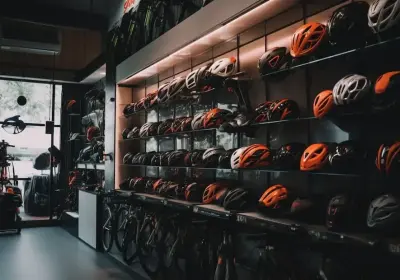
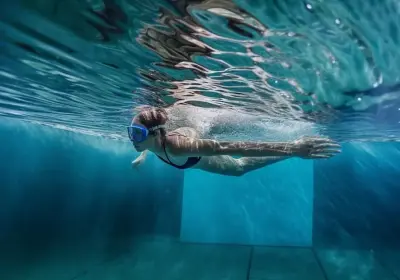




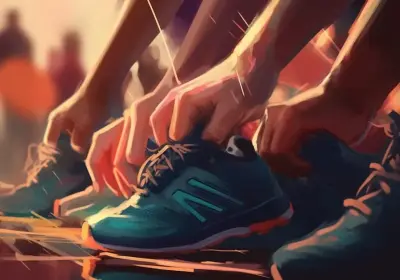







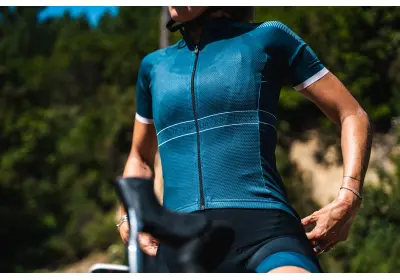
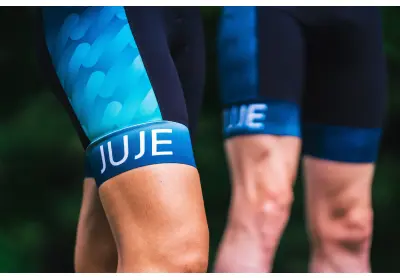




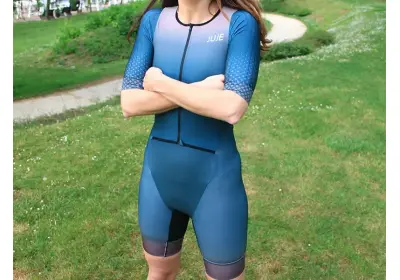


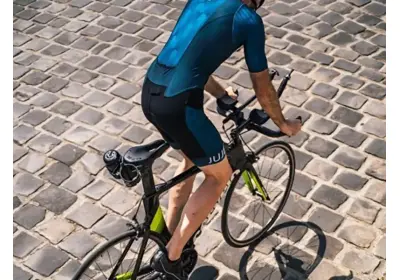
Leave a comment